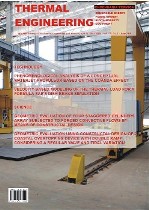TEMPORAL VARIABILITY OF LONGITUDINAL SEDIMENT TRANSPORT ON THE BRAZILIAN CONTINENTAL SHELF
DOI:
https://doi.org/10.5380/reterm.v18i1.67025Keywords:
coastal zone, numerical modeling, TOMAWAC, waves, sediment transportAbstract
The sediment transported along the coast can alter the existing balance in certain environments, causing or accelerating erosive processes, and resulting in economic and environmental damages. In this way, predicting changes in the coastal zone and understanding the beach processes is an essential source of information for the elaboration of coastal management plans. In this context, the present work aims to estimate the alongshore sediment transport (LST) in several sectors of the Brazilian Coast, identifying the annual average and the predominant transport. This study was conducted for the period between the years 1979 and 2015, using computational modeling to investigate the behavior of the waves, and empirical formulas to calculate the LST rates. In addition, the temporal variability was investigated through the wavelet analysis. The results showed a great diversity in the wave climate behavior along the Brazilian Coast, presenting a good correlation in terms of magnitude between the estimation of LST and past studies in the different sectors analyzed. The place where transport has become pronounced understands the sector between Alagoas and Rio Grande do Norte states, while the opposite was observed in the Southern part of Bahia. The wavelet analysis showed that the spectrum of LST time series has a significant amount of energy for processes with a seasonal and annual variability, indicating that the northern regions of Brazil are most affected by the interannual processes. In this sense, informations along the Brazilian coast are presented, that may be considered in future projects, involving the sustainable management of the coastal zones.
Downloads
Published
How to Cite
Issue
Section
License
Direitos Autorais para artigos publicados nesta revista são do autor, com direitos de primeira publicação para a revista. Em virtude da aparecerem nesta revista de acesso público, os artigos são de uso gratuito, com atribuições próprias, em aplicações educacionais e não-comerciais.



